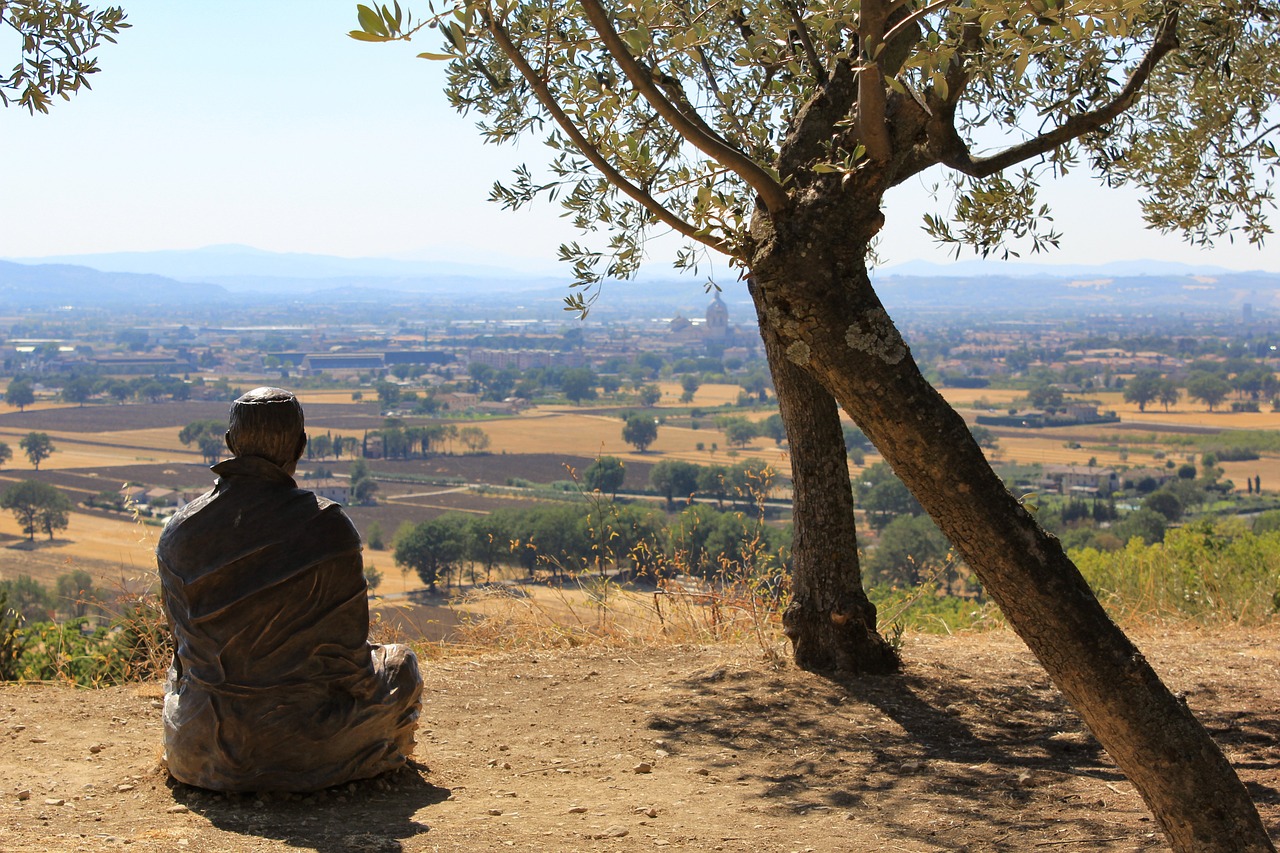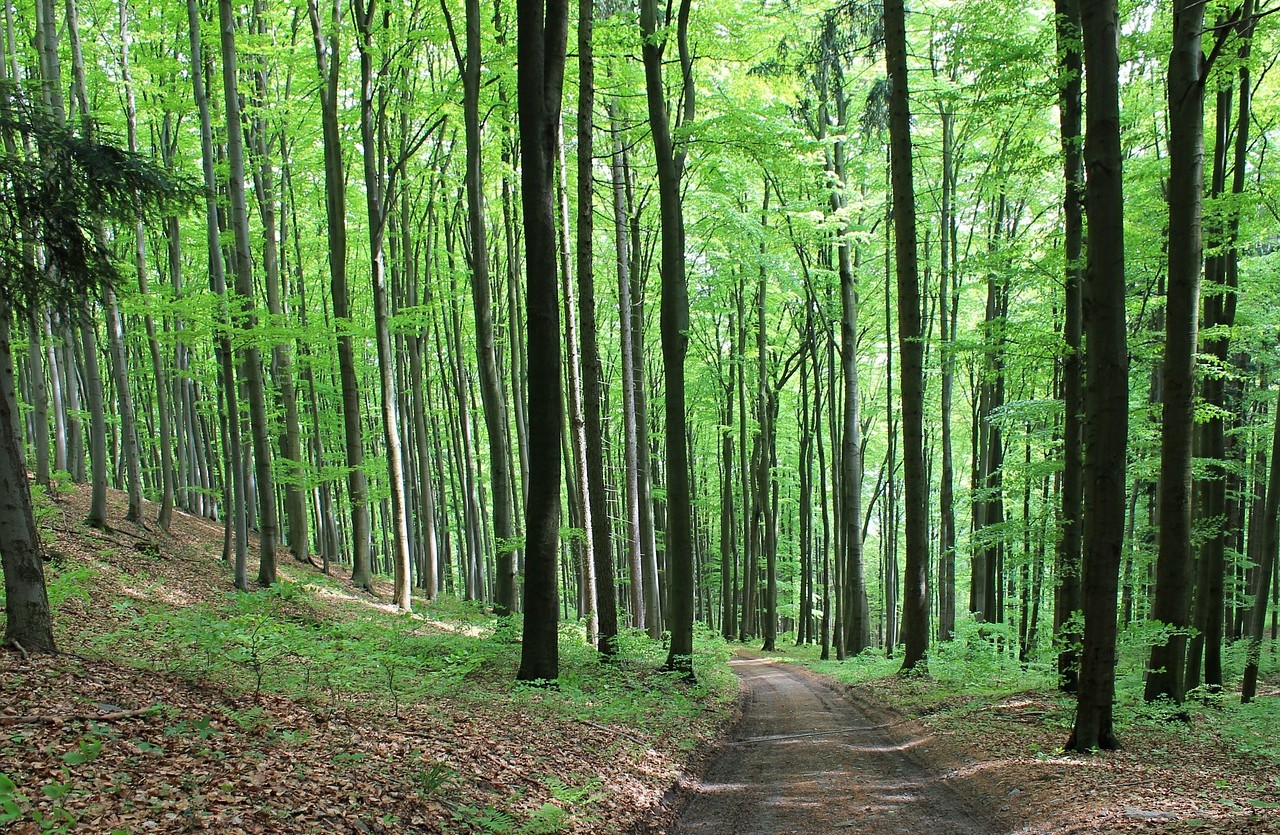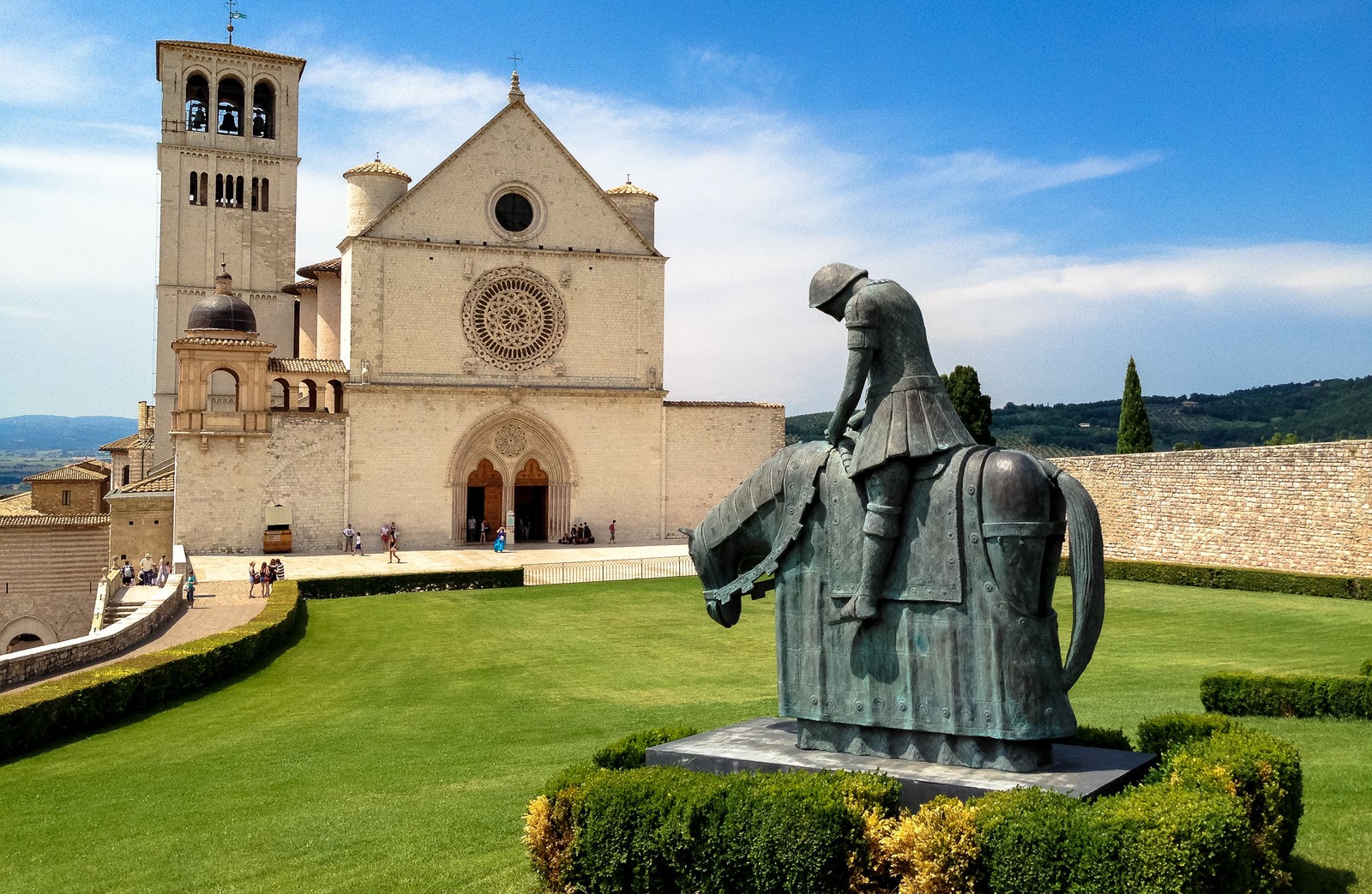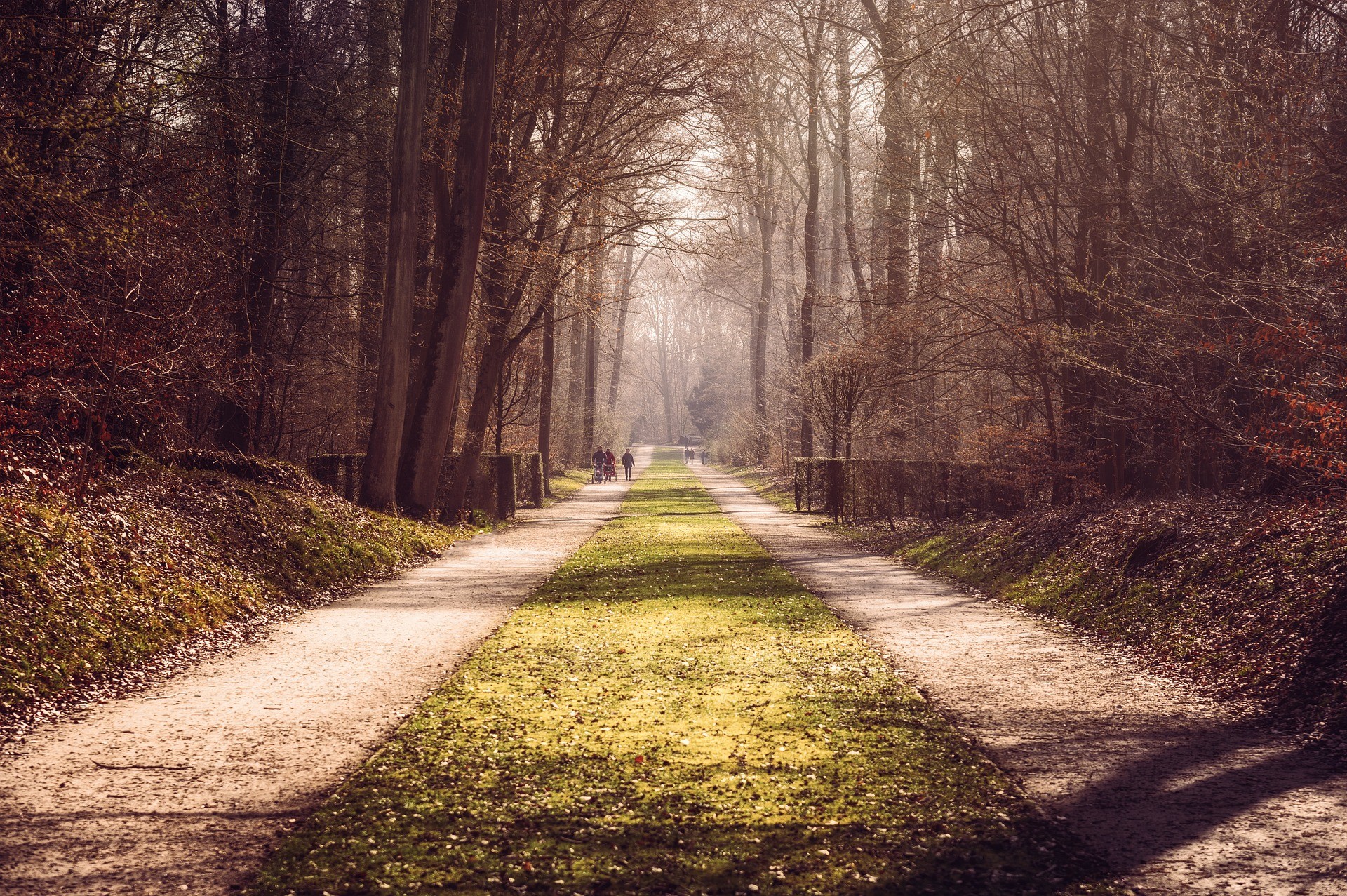
Umbria is known as the green heart of Italy, making it a place rich in nature and outdoor activities. However, in Umbria, there is not only the thrill of outdoor sports; there is also the peace and spirituality of slow tourism, particularly in the form of pilgrimages. Umbria is a land characterized by numerous journeys that follow in the footsteps of great Saints such as Saint Benedict and Saint Francis. Before exploring together the best journeys in Umbria, also read "WHO CAN PRACTICE A PATH" and "WHAT EQUIPMENT TO USE DURING A JOURNEY."
We are ready to discover Umbria on foot.

Il grande anello del Monte Cucco: trekking nella natura!
An itinerary that crosses various locations, starting from Fossato di Vico and continuing towards the Val di Ranco and Costacciaro. Monte Cucco, Pascelupo, La Valle delle Prigioni, and Gubbio will be the stages crossed until returning to Fossato di Vico.
La Via di San Benedetto: da Norcia a Montecassino
A captivating journey of 300 km that winds through the heart of Italy: from Umbria, through Lazio, to the border with Campania. An itinerary that connects the three most important places of Saint Benedict: Norcia, his birthplace, Subiaco, where he lived for over thirty years and founded numerous monasteries, and Montecassino, where he spent the last part of his life and wrote the Rule. All stages unfold along trails, dirt roads, and low-traffic roads, traversing the valleys and mountains of Umbria and Lazio.
La Via di San Benedetto: da Norcia a Rieti
The initial stretch of the captivating Path of San Benedetto: from Umbria to Lazio. An itinerary that passes through Norcia, Cascia, Poggio Bustone, and Rieti. The route develops in predominantly mountainous areas, characteristic of central Italy.

La Via di San Francesco: da Assisi a Roma
A spiritual journey, a path of faith that connects two of the most visited cities by pilgrims worldwide, Assisi and Rome.
La Via di San Francesco: da Citta' di Castello ad Assisi
This pilgrimage on the Via di San Francesco starts from the Tifernate area, dominated by Città di Castello, and reaches Assisi, passing through the Pietralunga and Gubbio areas that gently slope towards the hometown of the Saint. It is a long and, in some places, challenging route, so intermediate stages in Pietralunga and Valfabbrica are essential.
La Via di San Francesco: da Greccio ad Assisi
The journey of San Francesco starts from the Holy Valley of Rieti, an almost circular plain crossed by the Velino River and surrounded by mountainous and hilly reliefs. The Valley is called "holy" for hosting numerous monks and especially the mendicant orders since the 13th century (up to twenty-three Franciscan convents will be counted). The route continues into the Valnerina, a valley that follows the course of the Nera River between Visso and Narni: in its northern part, it is delimited by the Sibillini Mountains and the plateau of Norcia. The entire territory, dotted with fortified settlements and monastic cenobiums, is protected within the regional park of the Nera River, which also includes the famous and evocative Marmore Falls. The central part of the route unfolds in the Valle di Spoleto (or Umbra Valley), so dear to Francis. Numerous abbeys, parish churches, and convents testify to the spiritual charm of this territory, which encloses historic centers rich in art and history. Crossing the beautiful Spoleto and Spello, the Franciscan path finally reaches Assisi through the Foligno area and Mount Subasio (also a regional natural park). Assisi, the birthplace of Saint Francis, will leave you speechless for its beauty and the sacredness it still emanates after centuries.
La Via di San Francesco: da Gubbio ad Assisi
The starting point of this itinerary is Gubbio. The city of Gubbio is also strongly linked to the life of Saint Francis. Gubbio was the first place where the pilgrim Francis found shelter after renouncing all his possessions. The stage follows the Franciscan Path of Peace. From the medieval city, you walk to the Church of Vittorina, where Francis met and tamed a fierce wolf. You then reach Perugia for dinner and overnight in a structure, or you can directly base yourself in Assisi.
La Via di San Francesco: da La Verna ad Assisi
The starting point of this itinerary is the sanctuary of La Verna, located on the southern edge of the National Park of the Casentino Forests, one of the largest and most varied forested areas in Europe. From Casentino, you reach the Alpe della Luna range (regional nature reserve): a vast wooded area that leads into the upper Tiber Valley, historically relevant for the passage of the Via Romea and the disputes related to its control. The last area of the route to be crossed before reaching Assisi is the Eugubino: a predominantly mountainous area, rich in natural beauty and artistic treasures.
La Via di San Francesco: da Piediluco ad Assisi
A long pilgrimage on foot of about 100 km to travel the same roads that Saint Francis walked in the 13th century.
La Via di San Francesco: da Pietralunga ad Assisi
The itinerary winds through important cities, starting from Pietralunga, passing through Loreto, Gubbio, Biscina, and Valfabbrica until reaching Assisi.
La Via di San Francesco: da Spoleto ad Assisi
A long pilgrimage on foot in Southern Umbria of about 60 km. Starting from the wonderful city of Spoleto to Poreta, a Franciscan place about 15 km from Spoleto. The itinerary then continues for 12 km from Poreta to Trevi, a charming village enclosed within medieval walls. From here, the journey, after about 13 km, will reach Foligno, one of the most important medieval cities in Umbria. The final stage from Foligno passes through the enchanting village of Spello until arriving, after about 20 km, in Assisi. The last stretch of the route, in the shade of the vegetation of Mount Subasio, is rich in places with strong spiritual and religious significance, such as the Abbey of San Benedetto and the Hermitage of the Carceri. Upon arriving in Assisi, the city that gave birth to Saint Francis, you can visit the Sacred Grove, the basilicas, and the places of the Saint's life.

La Via Romea Germanica: da Castiglione del Lago a Montefiascone
Le "Vie Romee" nella storia sono state molteplici, differenziandosi in base ai luoghi di partenza, alle condizioni delle strade e alla presenza di pericoli, tra cui il brigantaggio. Una discriminante fondamentale era soprattutto la possibilità di trovare riparo in luoghi sicuri, come gli ordini ecclesiastici e monastici. La Via Romea Germanica è uno dei numerosi itinerari concepiti come "Via Melior" nel XIII secolo per i pellegrini del Nord Europa, considerando che le altitudini del Brennero e della Serra rappresentano i passi più bassi e sicuri da percorrere. Questo percorso consente di attraversare luoghi suggestivi, partendo dal lago più grande del centro Italia, il Trasimeno, per giungere al Lago di Bolsena, uno dei più affascinanti del territorio.
Il cammino dei Protomartiri Francescani
Il Cammino dei Protomartiri Francescani è uno dei percorsi più suggestivi e spirituali che si possano affrontare. Si sviluppa all'interno del territorio diocesano di Terni-Narni-Amelia e attraversa le città che diedero i natali ai Protomartiri Berardo, Adiuto, Accursio, Pietro e Ottone: Terni, Stroncone, Calvi dell'Umbria, Narni, San Gemini e Cesi.
Non perdere anche "THE BEST JOURNEYS IN ITALY" per scoprire i meravigliosi percorsi della nostra penisola.